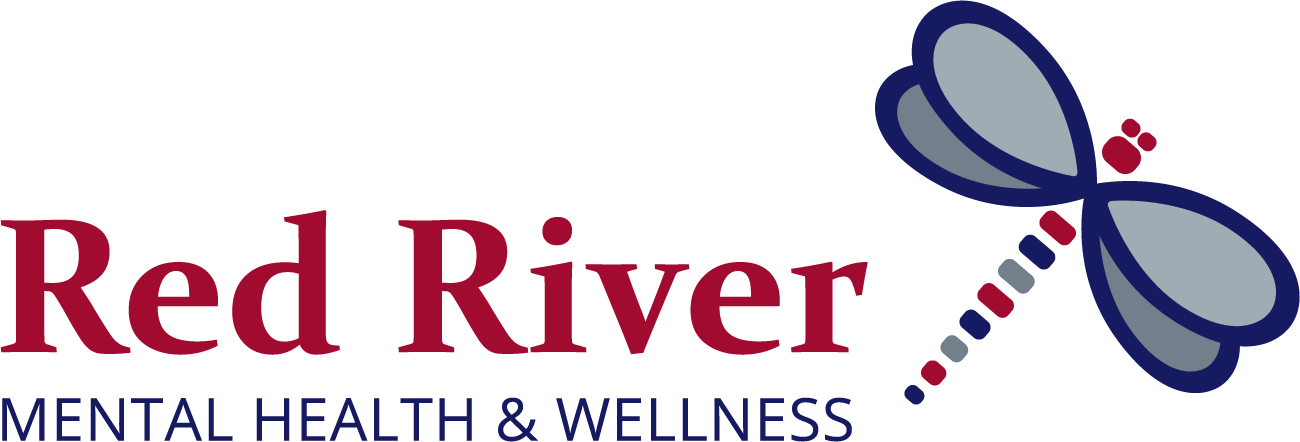Anxiety isn’t just “worrying too much.” It’s the racing thoughts that keep you awake at night, the pounding heart that seems to come out of nowhere, and the shoulders that never quite relax. For many people, the physical toll is just as overwhelming as the mental one.
That’s why the most effective approaches don’t stop at one angle — they bring mind and body together, helping to break the loop that keeps anxiety in overdrive.
Calming the Body
Anxiety is a misfiring alarm: faster heart rate, shallow breathing, tight muscles. In a true emergency, this response is protective. But when it happens day after day, it becomes exhausting.
Slow, steady breathing tells the nervous system that you’re safe, and research shows it can lower stress (Zaccaro et al., 2018). Grounding, posture shifts, and mindful movement also help reset the body out of fight-or-flight (Porges, 2022; Kolacz et al., 2021).
When the body begins to settle, it’s much easier for the mind to follow.
Working with Thoughts
If the body sounds the alarm, the mind often keeps it ringing. Anxiety thrives on “what if” spirals and worst-case scenarios, which is why many therapies focus on shifting thought patterns.
Cognitive behavioural therapy (CBT) helps people notice distorted thinking and replace it with something more balanced. Acceptance and commitment therapy (ACT) goes further by teaching people to let anxious thoughts come and go without getting caught in the struggle. Instead of being consumed by worry, the focus shifts to living by your values and taking actions that reflect what matters most. Research shows both CBT and ACT can significantly reduce anxiety (A-Tjak et al., 2015; Levin et al., 2020).
But here’s the challenge: thoughts alone aren’t the whole story. Anxiety lives in the body as much as the mind. Many people find that even after learning to “think differently,” their body still reacts with racing heart, tense muscles, or panic. Without calming the body, the loop continues — and that’s why cognitive approaches on their own don’t always bring lasting relief.
An integrative approach weaves these methods together with body-based therapies. Mindfulness creates space to notice thoughts while calming the nervous system. Somatic approaches work directly with physical responses to release tension. And Eye Movement Desensitization and Reprocessing (EMDR), originally developed for trauma, has been shown to help people reprocess old fears so to reduce or resolve overwhelming reactions (Valiente-Gómez et al., 2019).
Working with both the body and mind helps interrupt the loop that keeps anxiety going.
Different Faces of Anxiety
Anxiety doesn’t look the same for everyone. For some, it’s mostly physical — racing heart, stomach knots, or shortness of breath. For others, it’s mental — constant worry, spiraling thoughts, or dread about what could go wrong. Often, it’s both.
There are also different patterns anxiety can take:
- Generalized Anxiety Disorder (GAD): Persistent, hard-to-control worry about everyday life
- Social Anxiety: Fear of judgment or embarrassment in social situations
- Panic Disorder: Sudden surges of fear or panic attacks
- Phobias: Strong fear of specific places, situations, or objects
- Health Anxiety or OCD-related fears: Anxiety tied to health concerns or intrusive thoughts
While the details vary, the loop is the same: body and mind feeding into each other. That’s why a flexible, integrative approach is so effective — it can be tailored to your unique experience.
Why an Integrative Approach Matters
The loop is reciprocal: perceived safety threats → worried thoughts → more body tension and physical sensations. Working on just one side often isn’t enough. Research shows that integrative approaches — blending exposure, body regulation, and thought-based strategies — are more effective than relying on a single method (Hofmann et al., 2012; Watts et al., 2021).
What Often Doesn’t Work
If you’ve tried therapy before and felt it didn’t help, you’re not alone. Some common strategies can backfire when used in isolation:
- Debating your thoughts. Analyzing fears can turn into a tug-of-war that reinforces anxiety instead of weakening it (Blakey & Abramowitz, 2016). For OCD and GAD, it’s much more effective when paired with gentle exposure (Hezel & Simpson, 2019).
- Focusing on probabilities. Being told your fear “isn’t likely” rarely soothes the catastrophic “what ifs” (Clark & Rock, 2016).
- Reassurance-seeking. Asking for certainty or Googling symptoms may calm briefly, but doubts almost always return stronger (Salkovskis et al., 2016; Wu et al., 2016).
- Misusing mindfulness. If meditation is used to push thoughts away, it backfires. True mindfulness is about noticing without judgment, which research shows reduces anxiety (Magee et al., 2012; Hoge et al., 2022).
- Avoidance. Skipping uncomfortable situations provides temporary relief but makes anxiety stronger long-term (Craske et al., 2014).
If you’ve run into these traps, it doesn’t mean therapy can’t work for you. It means the approach wasn’t matched to your needs. Progress comes when strategies are combined thoughtfully and practiced in a safe, professional space.
What Progress Looks Like
With integrative support, people often notice:
- Physical symptoms settle more quickly
- Worries lose intensity and spiral less often
- Confidence grows in facing situations instead of avoiding them
- Life feels lighter, freer, and less controlled by fear
Final Word
Anxiety is your body’s protection system stuck in overdrive. Lasting change comes from calming the body, reshaping thought patterns, and gently facing fears — together.
If anxiety is holding you back, you don’t have to do this alone. Jamie offers counselling and psychotherapy for teens, adults, and seniors across Ontario — online or in person at the farm.
Book a free 15-minute discovery call to see if an integrative approach is the right fit for you.
About the Author
Jamie McIntyre is a Masters-level Registered Social Worker and Psychotherapist, and a proud member of the Manitoba Métis Federation (Red River Métis). Based near Wardsville, Ontario, she brings lived and professional experience as a clinician, farmer, coach, frontline worker, and educator. Trained in Polyvagal-Informed Approaches, CBT, EMDR, ACT, and Narrative Therapy, Jamie also integrates holistic, land-based, and equine-assisted methods. She works with clients aged 12 and up, focusing on anxiety, trauma, depression, grief, burnout, and life transitions.

